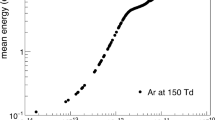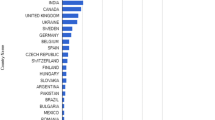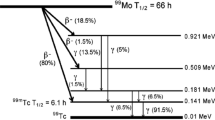Abstract
Nuclear material accountancy is of continuous concern for the regulatory, safeguards, and verification communities. In particular, spent nuclear fuel reprocessing facilities pose one of the most difficult accountancy challenges: monitoring highly radioactive, fluid sample streams in near real-time. The Multi-Isotope Process monitor will allow for near-real-time indication of process alterations using passive gamma-ray detection coupled with multivariate analysis techniques to guard against potential material diversion or to enhance domestic process monitoring. The Compton continuum from the dominant 661.7 keV 137Cs fission product peak obscures lower energy lines which could be used for spectral and multivariate analysis. Compton suppression may be able to mitigate the challenges posed by the high continuum caused by scattering. A Monte Carlo simulation using the Geant4 toolkit is being developed to predict the expected suppressed spectrum from spent fuel samples to estimate the reduction in the Compton continuum. Despite the lack of timing information between decay events in the particle management of Geant4, encouraging results were recorded utilizing only the information within individual decays without accounting for accidental coincidences. The model has been validated with single and cascade decay emitters in two steps: as an unsuppressed system and with suppression activated. Results of the Geant4 model validation will be presented.






Similar content being viewed by others
References
International Atomic Energy Agency, Department of Nuclear Fuel Cycle and Materials Section (2005) Technical Document-1467
Orton C, Fraga C, Christensen R, Schwantes J (2011) Nucl Instrum Methods A 629:209–219
Pickett S, Doyle J (eds) (2008) Nuclear safeguards, security, and nonproliferation. Butterworth-Heinemann/Elsevier, Oxford
Orton C, Fraga C, Christensen R, Schwantes J (2011) Nucl Instrum Methods A. doi:10.1016/j.nima.2011.12.083
Matsson I, Grapengiesser B (1997) Appl Radiat Isot 48:1289–1298
Britton R (2011) J Radioanal Nucl Chem. doi:10.1007/s10967-011-1362-x
Knoll G (2000) Radiation detection and measurement, 3rd edn. Wiley, New York
Landsberger S, Peshev S (1996) J Radioanal Nucl Chem 202:201–224
Aryaeinejad R, Hartwell J, Scates W (2005) IEEE Trans Nucl Sci 52:1728–1732
Kulisek J, Hartwell J, McIlwain M, Gardner R (2007) Nucl Instrum Methods A 580:226–229
Lubrun A, Bignan G (2001) Nucl Technol 135:216–229
Agostinelli S et al (2003) Nucl Instrum Methods A 506:250–303
Hurtado S, Garcia-Tenorio R, Garcie-Leon M (2009) IEEE Trans Nucl Sci 56:1531–1536
Roteta M, Garcia-Toraño E (1996) Nucl Instrum Methods A 369:665–670
Çetiner N, Ünlü K, Brenizer J (2008) J Radioanal Nucl Chem 276:615–621
Boson J, Ågren G, Johansson L (2008) Nucl Instrum Methods A 587:304–314
Acknowledgments
This research was performed under the Nuclear Forensics Graduate Fellowship Program, which is sponsored by the US Department of Homeland Security, Domestic Nuclear Detection Office and the US Department of Defense, Defense Threat Reduction Agency. The authors thank the US Department of Energy’s Materials Protection, Accounting and Control Technology (MPACT), Fuel Cycle Research and Development (FCR&D) program and the Next Generation Safeguards Initiative (NGSI), Office of Nonproliferation and International Security (NIS), National Nuclear Security Administration (NNSA) for funding this work. Pacific Northwest National Laboratory is operated for the US Department of Energy by Battelle under Contract DE-AC05-76RL01830.
Author information
Authors and Affiliations
Corresponding author
Rights and permissions
About this article
Cite this article
Bender, S.E., Ünlü, K., Orton, C.R. et al. Geant4 model validation of Compton suppressed system for process monitoring of spent fuel. J Radioanal Nucl Chem 296, 647–654 (2013). https://doi.org/10.1007/s10967-012-1988-3
Received:
Published:
Issue Date:
DOI: https://doi.org/10.1007/s10967-012-1988-3




